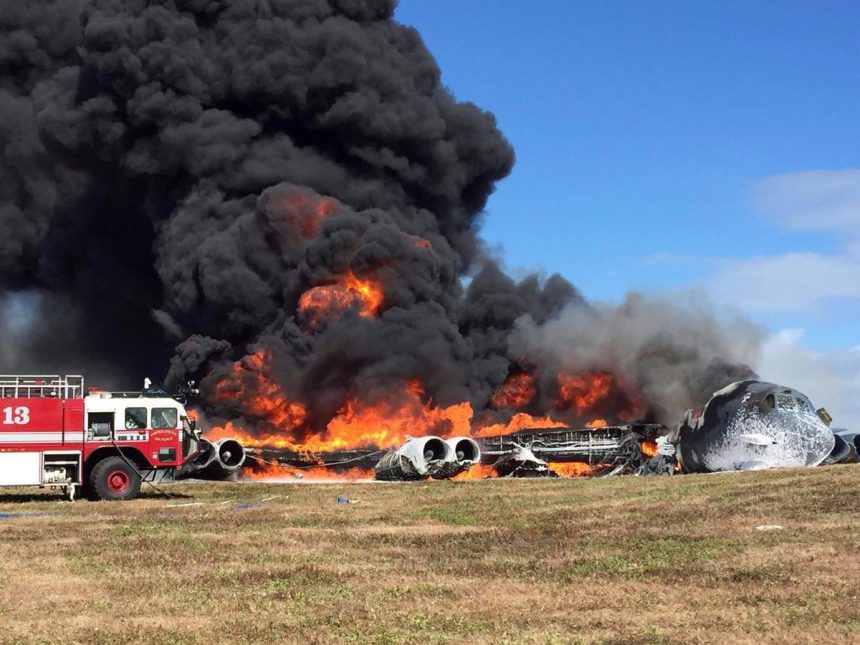Buff down in Guam.
At 08.30AM LT on May 19, a B-52H Stratofortress bomber belonging to the 69th Expeditionary Bomb Squadron, crashed on the flightline at Andersen AFB, in Guam.
All the 7 crew members egressed the plane safely.
The B-52 was deployed to Andersen from Minot AFB, North Dakota, as part of the Washington’s continuous bomber presence mission in the Pacific.
For the records, this is not the first time a B-52 (or a heavy bomber) crashes at the American bomber base in the Pacific.
On Jul. 21, 2008, a U.S Stratofortress belonging to the 20th Bomb Squadron from Barksdale AFB, Louisiana, callsign “Raidr 21” crashed while taking part in the flyover for the U.S. liberation of the island from Japanese occupation in 1944. The aircraft crashed into the Pacific Ocean approximately 30 nautical miles (56 km) northwest of Apra Harbor, Guam, 5 minutes before the scheduled flyover time, killing the 6 crew members.
The cause of the crash was a wrong horizontal stabilizer trim setting.
The aircraft was on a four-month tour to the Pacific to replace the B-2 Spirit bombers which had been grounded following the loss of one of them on the same base in February 2008.
In fact, on Feb. 23, 2008, a B-2 with the 393rd Bomb Squadron, 509th Bomb Wing, Whiteman AFB, Missouri, crashed on the runway shortly after takeoff marking the first ever crash of a Spirit stealth bomber. The two pilots ejected safely from the aircraft even though one of them suffered a spinal compression fracture.
The crash was caused by moisture in the sensors that created bad readings to the flight control computer that consequently forced the aircraft to pitch up on takeoff.
Actually, between the two above mentioned incidents, on Mar. 8, 2008, there was another minor incident, involving a B-1 bomber that collided with two fire trucks after an emergency landing at Andersen AFB caused by a hydraulic leak experienced shortly after departure to Ellsworth AFB.
In February 2010, fire broke out in one of the engines of a B-2 stealth bomber preparing for take-off. The aircraft sustained substantial structural damage: 18 months of local repairs were required to make the B-2 able to take off again to fly to Northrop Grumman facility in Palmdale, California. The aircraft eventually returned to operative status 4 years after the incident.
Image credit: Kuan News
















